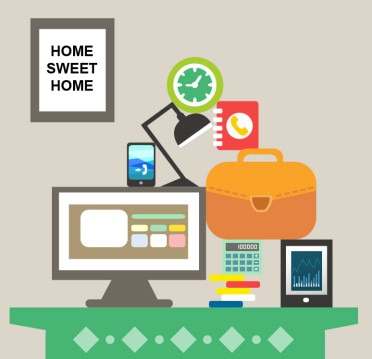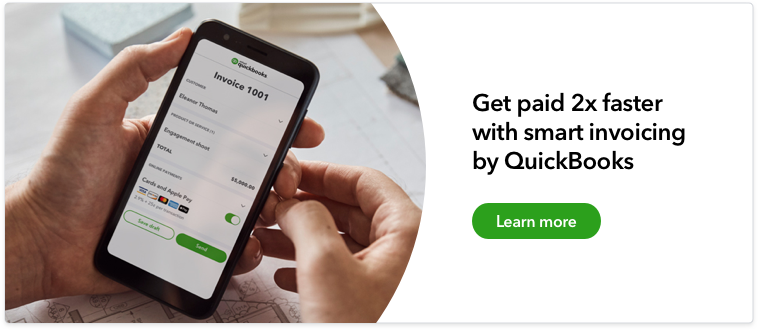Almost every small business owner knows the frustration that comes with a past due invoice. QuickBooks found that more than a quarter of small businesses say it takes more than 30 days to get paid, and more than half of small business owners say late customer payments are the source of their cash flow problems.

How to follow up on past due invoices: Guide & payment reminder letter templates
In this article, you will learn:
What is a past-due invoice?
A past-due invoice is a payment a customer hasn’t made by the due date agreed in the invoice payment terms.
Late payments are a risk to your business, after all, you can’t pay your bills if your client doesn’t pay theirs. When you’re dealing with past-due payments, the important thing is to not panic and stay positive, even if you have to work a little harder to collect what you’re owed.
How to follow up on past-due payments
1. Agree to a preferred invoice payment method up-front
For faster payments, have a conversation about invoices at the start of a project before you begin your work. If it’s too late for that, don’t beat yourself up, there’s always next time.
But it can be easier to get your payment if you’ve determined these two specific logistics of what your client wants and needs in an invoice:
- Who receives the invoice: Sometimes it’s the client themselves, sometimes it’s the accounting department, and sometimes it’s both. Make sure you know the procedure to expedite smoother, faster payments.
- How they like to pay: Offering your customers more payment options, such as credit card, eCheque, or direct ACH bank transfers, ensures that there’s no holdup for an easily avoidable reason.
It’s an extremely common situation, a client becomes accustomed to paying for almost everything one way, only to become inconvenienced when that payment method isn’t available any longer. If they pay for everything by credit card and you’re suddenly asking for a cheque, they may not ever find the time to locate their chequebook, get a stamp, and put the cheque in the mail.
If your client hasn’t paid you on time, asking, “Would you prefer to pay another way?” may be all it takes to get invoices paid on time in the future.
2. Make it clear on the invoice what your customer is paying for
Clients are more likely to pay on time when the invoice is crystal clear about what they’re paying for. That’s why you want to make sure you’ve included all the information a client needs in your invoice.
This could include:
- Consultation time
- Hours spent on specific tasks
- Research time
- Distinct project numbers for pre-defined deliverables
- Cost of materials
If you haven’t yet catalogued your products or services, it’s a worthwhile exercise to do so to make sure that everything from marketing your business to sending invoices is more efficient in the future.
You should also check that your payment terms and due dates are featured in a prominent place on your invoice design. Without clear payment terms, it’s your word against theirs when an invoice is actually 'late'.
You may be tempted to put 'immediate payment' on your invoice, but that can be confusing to some clients. Adding a date gives clients a concrete target to meet. The most common payment term is 'net 30', which means the recipient must pay their invoice within 30 days of the invoice date.
Be proactive and remind customers of their outstanding payments. Sending a reminder that their payment is due next week gives them a heads up and may get the money you’re owed in your hands more quickly.
3. Establish a process for following up on past due invoices
Having the conversation with your clients about past due payments can be a huge source of anxiety, especially when paying your own bills on time depends on the cash flow that a late invoice represents.
However, having a system for following up on late payments can help you keep calm and move on to your other work.
Accounting software does make following up on late payments easier because, unlike manual systems like Word or Excel, you can sort invoices by client name or due date, and set up automatic invoice reminders for overdue payments.
How to write a payment reminder letter
When writing a past-due invoice letter, include the following details:
- The invoice number
- The date the invoice was issued
- The invoice due date
- The transaction payment terms
- The amount owed, including any late fees
- Instructions for payment
- Your phone number and contact information
This will help ensure your customer has all the information needed to pay your overdue invoices.
To make it easier to send these polite reminders, QuickBooks allows you to create automated messages that you can send your clients. If you’re not automating reminders with QuickBooks, starting with a payment reminder template can help you write a professional and friendly payment reminder email.
Past due invoice email templates
Day 1: The payment due date
If you haven’t received the payment by the due date, check to see if they even received the bill. Using QuickBooks allows you to see if your client has viewed the invoice, which can tip you off that they might just have overlooked the email.
Either way, send your client a polite email reminder mentioning that perhaps the invoice has gotten lost in the shuffle. That might be enough to jog them to remember to send it. Or, they may say that the cheque is in the mail, in which case you know the amount due is coming soon.
For your convenience, here are some invoice reminder email templates you can use in your first email reminder to your customers or clients. Remember to customise them to your specific business, and match the tone of your relationship with them, as these are meant to be guides to help you get started.
Payment reminder email template
Subject line: [Your Business Name]: Follow up on Invoice #XXXXX for [Product/Service]
Body:
Hi [Customer’s Name],
I hope all is well. This email is a friendly reminder that your payment on invoice #XXXXX, which was sent on [sent date], is due [due date].
We wanted to take this opportunity to see if you’ve had a chance to look over the invoice and confirm that everything is ok and on track for payment by [due date]. Attached is the invoice for your review.
Please let me know if you have any questions or concerns.
Thank you,
[Your Name]
[Your Company Name]
Invoice due email template
Subject line: [Your Business Name]: Invoice #XXXXX for [Product/Service] is due today
Body:
Hi [Customer’s Name],
I hope this email finds you well.
This email is to notify you that payment on invoice #XXXXX for the amount of [invoice amount], which was sent on [sent date], is due today.
We have not yet received payment on this invoice and ask that you kindly confirm an ETA for the payment. Please remit payment by [late fee penalty date], otherwise a late fee will be charged.
We hope to avoid a late fee penalty, so if you have any questions about this invoice, please let us know and we will be happy to clarify.
Thank you,
[Your Name]
[Your Company Name]
Day 15: Two weeks late
If your payment is two weeks late, that’s when you may start feeling panicky.
If you haven’t received payment after your first reminder, that’s a good time to reach out with a polite phone call to re-confirm they have the invoice and to see if they have any questions. Sometimes they neglected to tell you that there’s some specific information they need for their own system, like a PO number.
Or it could be that your invoice has been overlooked because one of your customer’s employees is out of the office. There is almost always a good reason why your invoice hasn’t been paid, so don’t be shy about asking.
And here is a past due invoice email template that you can simply copy, paste, edit and send to your customer:
15-day past due invoice email
Subject line: [Your Business Name]: Invoice #XXXXX for [Product/Service] is 15 days PAST DUE
Body:
Hi [Customer’s Name],
This email is to remind you that your invoice is now 15 days past due and I am seeking your immediate attention.
Our records show that we have not yet received payment for invoice #XXXXX in the amount of [invoice amount], which was due on [due date].
[Optional, if applicable] As your invoice is now past due, a late fee of [amount] has been assessed.
The outstanding invoice amount is [invoice amount plus late fees, if applicable] and is [number of days] past due. Attached is a copy of the invoice. You may make a payment here: [link to online payment or other payment methods].
Please let me know the status of your payment.
If your payment has already been sent, please disregard this past due notice. If you have any questions or concerns or would like to discuss payment plan options, please contact me at [contact number].
I appreciate you addressing this at your earliest convenience so we can work out this matter.
Thank you,
[Your Name]
[Your Company Name]
Day 30: One month late
A payment this late may feel like it is bordering on rude, but that doesn’t mean you should be. Keep calm and stay professional in your follow up.
If you have already spoken with the client, resend the invoice, along with any new charges to the original invoice, and reference the conversation you had and any concrete plans they had stated to send payment. In addition to email, send it via snail mail, which might get their attention.
You can also begin assessing late payment fees, but only if you had first explained it in your new client onboarding.
Hitting a customer with an unexpected late fee could cause more animosity than it’s worth. However, it’s perfectly fine to state your terms for late payments right up front and then be sure to itemise them on the next bill.
At this point, you may want to dial up your persistence. Be clear that you need to be paid and make sure you’re talking to the right person. If you are dealing with the accounting department, it might be time to get your client involved again as they have a vested interest in seeing you get paid in a timely fashion so the work can go on.
And that’s because this is an ideal time frame to cease current and future work. Politely let your client know via email that you will have to stop working on current projects until the bills are current.
Here is a 30-day past due invoice email template that you can simply copy, paste, edit and send to your customer:
30-day past due invoice email
Subject line: [Your Business Name]: Invoice #XXXXX for [Product/Service] is 30 days PAST DUE
Body:
Hi [Customer’s Name],
This email is to remind you that your invoice is now 30 days past due and I am seeking your immediate attention.
Our records show that we have not yet received payment for invoice #XXXXX in the amount of [invoice amount], which was due on [due date].
[Optional, if applicable] As your invoice is now past due, a late fee of [amount] has been assessed.
The outstanding invoice amount is [invoice amount plus late fees, if applicable] and is [number of days] past due. Attached is a copy of the invoice. You may make a payment here: [link to online payment or other payment methods].
Please let me know the status of your payment.
If your payment has already been sent, please disregard this past due notice. If you have any questions or concerns or would like to discuss payment plan options, please contact me at [contact number].
I appreciate you addressing this at your earliest convenience so we can work out this matter.
Thank you,
[Your Name]
[Your Company Name]
Day 60: Two months late
If 60 days is considerably past your invoicing terms, you may want to consider:
- Using an invoice factoring agency
- Sending the bill to a collections agency
- Writing the invoice off as bad debt and moving on
Here is a 60-day past due invoice email template that you can simply copy, paste, edit and send to your customer:
60-day past due invoice email
Subject line: [Your Business Name]: Invoice #XXXXX for [Product/Service] is 60 days PAST DUE – please send payment ASAP
Body:
Hi [Customer’s Name],
This important message requires your immediate attention. I have reached out to you on several occasions regarding a now 60-day overdue payment.
I have not yet received your payment on the attached invoice #XXXXX for the amount of [amount], which was due on [due date]. Please be aware that, as per my payment terms, you may be charged additional [late fees or interest] on payments received more than [number of days] past the due date.
If your payment is still not received by [final date], your account will be referred to a collections agency. This can be avoided by submitting your payment as soon as possible.
Again, if you have any questions or concerns about this payment, please contact me at [contact number]. I hope we can settle this matter as soon as possible.
Kind regards,
[Your Name]
[Your Company Name]
Takeaways: Friendly reminders can help you get paid
No business owner wants to deal with unpaid invoices, but it’s likely that most will encounter late payments at some point or another. By proactively setting up systems and processes that provide clarity around your accounts receivable and that keep you protected, you’ll be able to focus more on doing your work and growing your business, and less on the administrative headache of getting paid.
Of course, the timeline outlined in this guide represents the worst-case scenario; in most situations, all you’ll need to do is send a simple follow up reminder email, maybe provide more payment options, and your payment will be on its way.







